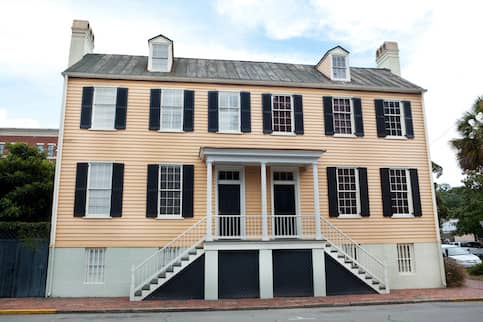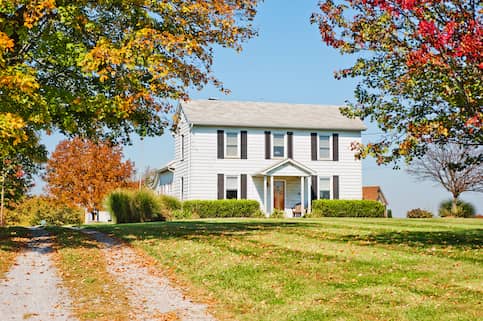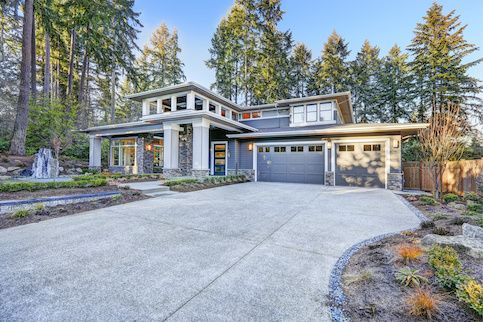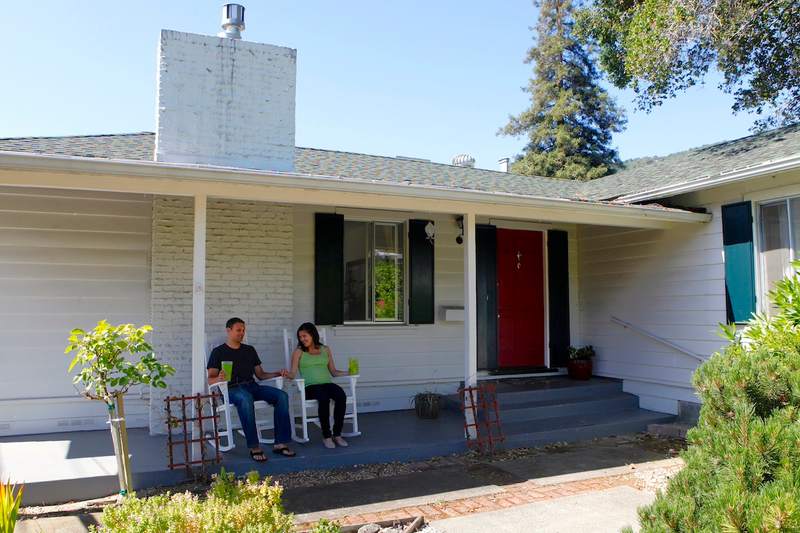The U.S. Department of Veterans Affairs (VA) is dedicated to helping veterans, service members, and eligible surviving spouses achieve homeownership by providing a home loan guaranty benefit and various housing-related programs. Private lenders, such as banks and mortgage companies, administer VA home loans with the VA’s guarantee of a portion of the loan, enabling more favorable terms for borrowers. In this article, we will delve into the details of how a VA loan operates.
What Is A VA Loan?
A VA home loan, designed to assist veterans, active-duty service members, and eligible surviving spouses in achieving homeownership, is administered by private lenders with a guarantee from the Department of Veterans Affairs. Established under the GI Bill in 1944, this program initially aimed to provide low-cost home loans to World War II veterans.
Evolving over time, the VA home loan program now offers various types of loans for purposes such as home purchase, refinancing, and energy-efficient improvements. Notably, VA loans are considered non-conforming, providing increased flexibility in terms and eligibility criteria compared to government-sponsored enterprises like Fannie Mae and Freddie Mac, making them a distinctive and valuable option for military veterans.
See What You Qualify For
Buy A Home
Discover mortgage options that fit your unique financial needs.

Refinance
Refinance your mortgage to have more money for what matters.
Tap Into Equity
Use your home’s equity and unlock cash to achieve your goals.
How Does A VA Home Loan Work?
The VA-backed home loan system, with its VA loan guaranty, offers a notable advantage by committing the Department of Veterans Affairs to cover part of the loan if a borrower defaults. This provides financial protection for lenders and incentivizes them to offer favorable terms. Importantly, VA loans stand out from conventional loans by eliminating the need for a down payment, making homeownership more accessible without a hefty upfront financial burden.
Tailored for move-in ready homes, VA home loans streamline the home buying process for veterans and service members, and their exclusion of private mortgage insurance (PMI) contributes to cost savings, enhancing overall affordability. In essence, the VA-backed home loan program provides a unique and advantageous route to homeownership, prioritizing the financial well-being of veterans and active-duty service members through features like the VA loan guaranty, the absence of a down payment requirement, and other distinct elements.
VA Loan Eligibility
The eligibility for a VA home loan is established based on precise criteria outlined by the Department of Veterans Affairs. Typically, individuals qualify for a VA home loan if they fit into one or more of the following categories:
- Active-duty service member: Current members of the military who meet the length-of-service requirements.
- National Guard member or reservist: Members with at least 6 years of service or those who have been called to active duty.
- Veterans: Those who have served in the active military, naval, or air service and were discharged under conditions other than dishonorable.
- Surviving spouse of a veteran: The surviving spouse of a service member who died in the line of duty or because of a service-related disability may be eligible.
VA Home Loan Requirements
To secure approval for a VA home loan, applicants need to meet several key criteria:
- Credit score: The Department of Veterans Affairs does not set a specific minimum credit score requirement for VA home loans because they emphasize that lenders should consider the applicant’s entire financial profile. Depending on the lender, you may have to hit a minimum credit score of 580 for a VA loan.
- Debt-to-income ratio (DTI): Generally, lenders are unwilling to lend to buyers who have a DTI of 50% or more. VA loans can be an exception to this rule. The VA leaves it up to VA-approved lenders to set their credit requirements.
- Property requirements: A VA loan requires a property to undergo an appraisal, ensuring it meets Minimum Property Requirements (MPRs) such as safe and sanitary conditions, structural integrity, and the absence of major hazards. The home should be intended for residential use, and its mechanical systems, roof, and overall condition must meet the VA’s standards for habitation.
- Income and employment history: VA loans generally require a stable employment history and consistent income. Lenders typically look for reliable and verifiable income sources, and while there isn’t a specific length of employment required, a steady employment and income history enhance the applicant’s eligibility for a VA loan.
- Loan limits: Loan limits for VA loans establish the maximum amount veterans or eligible borrowers can borrow without making a down payment. These limits are determined by the Department of Veterans Affairs and vary based on geographic location, reflecting the conforming loan limits set by the Federal Housing Finance Agency (FHFA).
- Occupancy requirements: Occupancy requirements for a VA loan stipulate that the financed property must serve as the borrower’s primary residence, ensuring it is occupied by the veteran or eligible individual. The intention is to promote the use of VA loans for housing needs rather than for investment or vacation properties.
- Funding fee: The funding fee for a VA loan is a one-time, upfront fee paid by the borrower to the Department of Veterans Affairs. This fee is intended to help offset the cost of the VA loan program and may vary based on factors such as the borrower’s military service, down payment amount, and whether it’s a first-time or subsequent use of the VA loan benefit.
How To Get A VA Home Loan
Acquiring a VA loan involves several key steps tailored to the needs of veterans and eligible borrowers. The following steps will help prospective homebuyers initiate the process of obtaining a VA loan:
1. Obtain A Certificate Of Eligibility
The Certificate of Eligibility (COE) is a crucial VA document confirming a borrower’s eligibility for a VA loan, serving as proof of entitlement to associated benefits. Obtained through the VA’s eBenefits portal, a VA-approved lender, or the official website, it details essential information about the borrower’s military service. As the initial step in the VA loan application, securing the COE guides lenders in determining eligibility for benefits, including the option to purchase a home without a down payment—a fundamental starting point for veterans and service members pursuing homeownership.
2. Prepare Your Finances And Documents
Efficiently organize your finances for the VA loan application by preparing essential documents like pay stubs, W-2 forms, tax returns, proof of additional income, bank statements, and details about debts. You should also be aware of your credit score. Veterans should include proof of military service, such as the DD Form 214. This proactive preparation expedites the application process and strengthens your position for favorable loan terms. Seeking preapproval from a VA-approved lender adds confidence to your home buying journey.
3. Choose A Lender
To find a VA lender, check with your current bank or credit union, reach out to mortgage brokers, or explore online resources like the VA’s official website. Seek recommendations from experienced real estate agents in VA transactions. When evaluating lenders, consider factors beyond interest rates, such as customer service and experience with VA loans. Understand VA closing costs to estimate and compare total expenses, ensuring well-informed decisions in navigating the home buying process.
4. Get Your Preapproval
A VA preapproval is an initial assessment by a VA-approved lender, determining your eligibility for a VA loan and the maximum loan amount based on your financial details. Submit essential documents like proof of income. This preapproval signals to sellers that you’re a serious and qualified buyer, streamlining your house search within budget and expediting the final loan approval process. While not a commitment to lend, securing a VA preapproval empowers you in the homebuying process and strengthens your negotiating position.
5. Find A Real Estate Agent
A skilled agent can adeptly navigate the specific requirements associated with VA loans, ensuring that your decisions align with the program’s guidelines and assisting in identifying properties meeting VA’s Minimum Property Requirements (MPRs). Their expertise extends to negotiating terms tailored to VA financing, coordinating with VA-approved lenders, simplifying paperwork, collectively streamlining the entire process, and enhancing the efficiency of your home buying experience.
6. Start House Hunting
When house hunting, focus on essential features like location, size, layout, and condition, considering proximity to amenities and the neighborhood’s safety. Be respectful during viewings by scheduling appointments, arriving on time, and avoiding overly critical comments.
7. Make An Offer
In preparation for making an offer on a house, collaborate closely with your real estate agent to determine a competitive yet fair bid based on market conditions. For VA loan users, it’s pivotal to include a “VA escape clause” or “VA option clause” in the offer, allowing withdrawal without penalty if the property doesn’t meet the VA’s Minimum Property Requirements or fails to appraise as agreed.
8. Get A VA Appraisal And Home Inspection
A VA appraisal evaluates a property’s value and adherence to the Department of Veterans Affairs Minimum Property Requirements. While focused on value, a home inspection is equally crucial for a comprehensive assessment of the property’s condition, identifying potential issues not apparent during the appraisal. Together, the VA appraisal and home inspection offer a comprehensive understanding of the property, enabling buyers to make informed decisions and negotiate repairs with the seller before completing the purchase.
9. Review The Closing Disclosure
Following the VA appraisal and home inspection, the Closing Disclosure takes center stage in the homebuying process. This detailed document, provided by the lender, outlines the final terms and costs of the mortgage loan. When reviewing the Closing Disclosure, pay close attention to loan terms, interest rates, monthly payments, and closing costs. Ensure consistency with the earlier Loan Estimate and thoroughly understand each item on the disclosure. The Closing Disclosure is a key tool for transparency, empowering buyers to make well-informed decisions as they approach the final stages of closing on their new home.
10. Close On The Home
Closing on a VA loan is the final step in the home buying journey, where both the buyer and seller, accompanied by their agents, come together to complete the property transfer. During this process, buyers review and sign key documents like the Closing Disclosure, settle closing costs, and officially take ownership by signing the deed. Funds are distributed to cover the purchase, and the buyer receives the keys to their new home.
Find A Mortgage Today and Lock In Your Rate!
Get matched with a lender that will work for your financial situation.
Additional VA Loan Assistance
The VA provides vital support to borrowers facing mortgage payment challenges through diverse programs. Eligible individuals can explore options like loan modification, special forbearance during financial hardships, and disability housing grants for veterans with service-connected disabilities. The VA also offers assistance during natural disasters, providing forbearance and extended deadlines.
In challenging situations where selling a property is difficult, the VA considers compromise sales to cover shortfalls, emphasizing its commitment to helping veterans navigate financial hurdles tied to homeownership. Borrowers experiencing difficulties are encouraged to connect with their loan servicer or the VA for personalized assistance.
Pros And Cons Of Getting A VA Loan
Embarking on the journey to secure a VA loan presents both unique advantages and challenges. Whether it’s the opportunity to acquire a home without a down payment or the careful considerations of funding fees and property standards, grasping the intricacies of the VA loan process is essential for veterans seeking to make well-informed decisions as they pursue homeownership.
VA Home Loan FAQs
Here, we have compiled some commonly asked questions about VA loans to assist you in gaining a comprehensive understanding of your benefits.
What is the VA home loan guaranty?
The VA home loan guaranty is a financial assurance offered by the Department of Veterans Affairs to private lenders. This guarantee protects a portion of the loan amount, making it possible for eligible veterans, service members, and surviving spouses to obtain more favorable mortgage terms. Essentially, it reduces the risk for lenders, facilitating increased accessibility to homeownership for those who have served in the military.
Do you have to pay back a VA loan?
Yes, a VA loan is a mortgage that necessitates repayment. Nevertheless, a notable advantage is that it frequently enables eligible borrowers to acquire a home without a down payment, and the terms are often more favorable than conventional loans.
What happens if I default on a VA loan?
In the event of a default on a VA loan, the Department of Veterans Affairs may intervene to fulfill its guaranty by covering a portion of the outstanding loan for the lender. It’s important to note that defaulting can have significant repercussions, potentially impacting your credit score and creating obstacles in obtaining future financing.
What fees are required with a VA loan?
With a VA loan, there are specific fees involved, including a funding fee, which can vary based on factors like your military service and down payment amount. While the funding fee is a notable cost, one of the advantages of VA loans is the absence of a requirement for private mortgage insurance (PMI).
Can I refinance my existing mortgage to a VA loan?
Yes, it is possible to refinance your current mortgage into a VA loan, utilizing options such as the Interest Rate Reduction Refinance Loan (IRRRL), commonly referred to as a VA Streamline refinance, if you meet the eligibility criteria. This streamlined refinancing process is designed to simplify paperwork for eligible veterans, service members, and surviving spouses, potentially resulting in lower interest rates.
How long does it take to close on a VA loan?
The duration to complete the closing process for a VA loan can vary, typically falling within the range of 40 – 50 days on average. The timeline is influenced by factors such as the complexity of the transaction, the appraisal and inspection processes, and the effectiveness of communication among the involved parties.
The Bottom Line
VA loans offer important benefits to military service members. Do you qualify for a VA loan or have additional VA loan questions?
Find A Mortgage Today and Lock In Your Rate!
Get matched with a lender that will work for your financial situation.

Christian Byers
Christian Byers is a freelance writer and editor with experience covering diverse topics. He has a Bachelor of Science in Journalism and a Bachelor of Arts in Communications from Eastern Michigan University. His experience as a writer and editor includes publications such as The Eastern Echo, Rocket Central and Woodward Sports Network.












